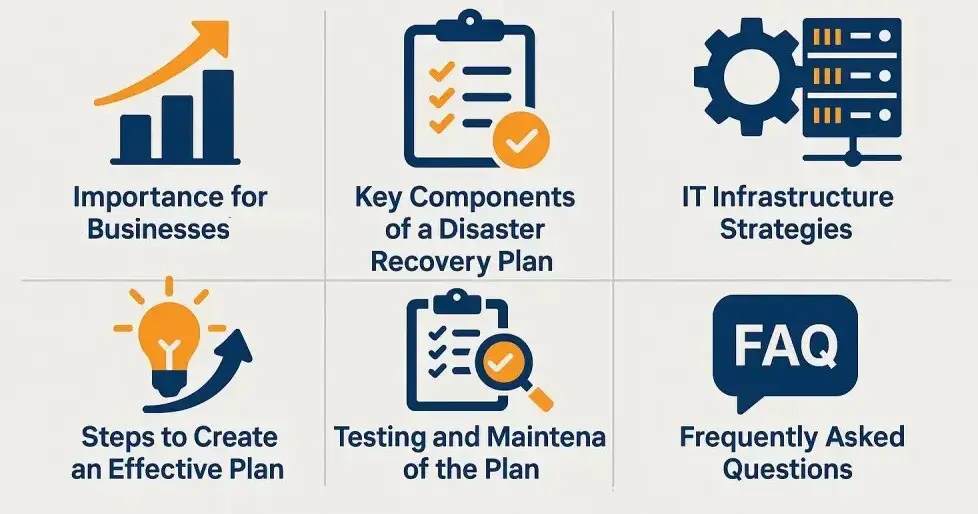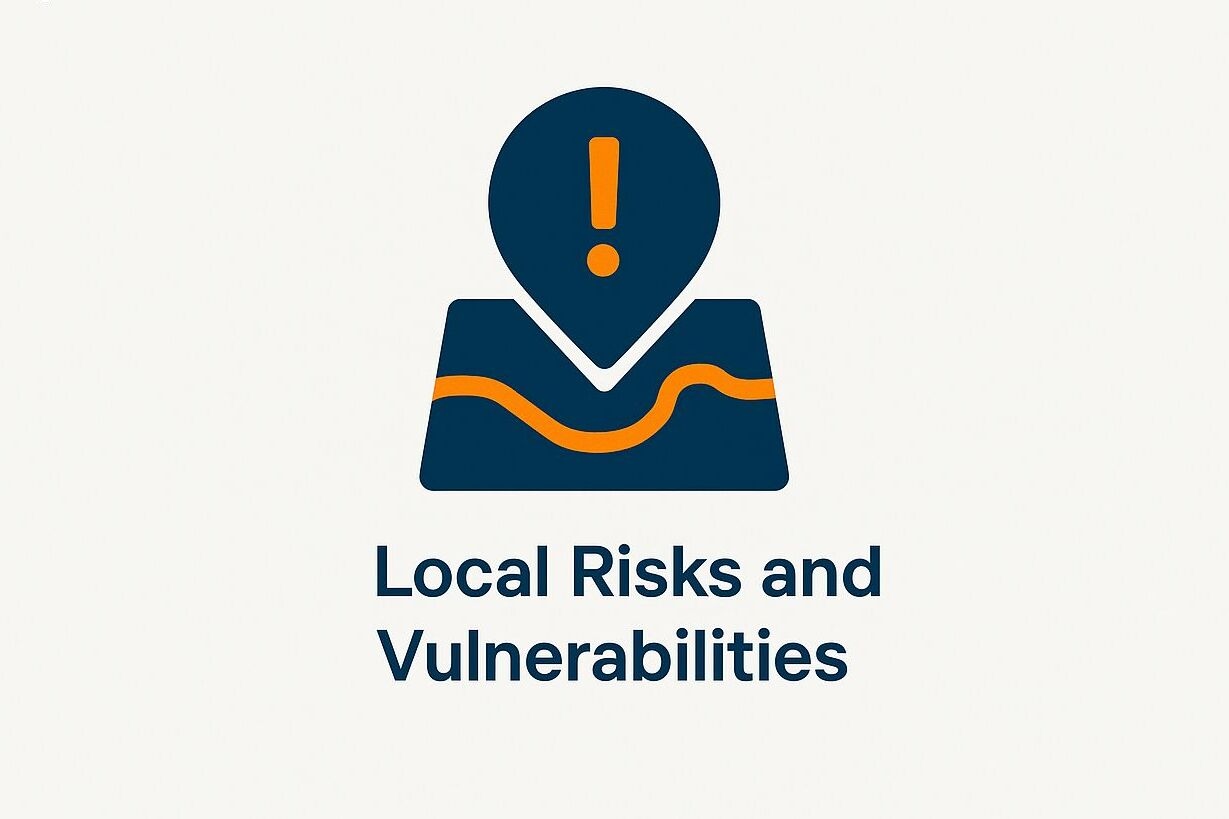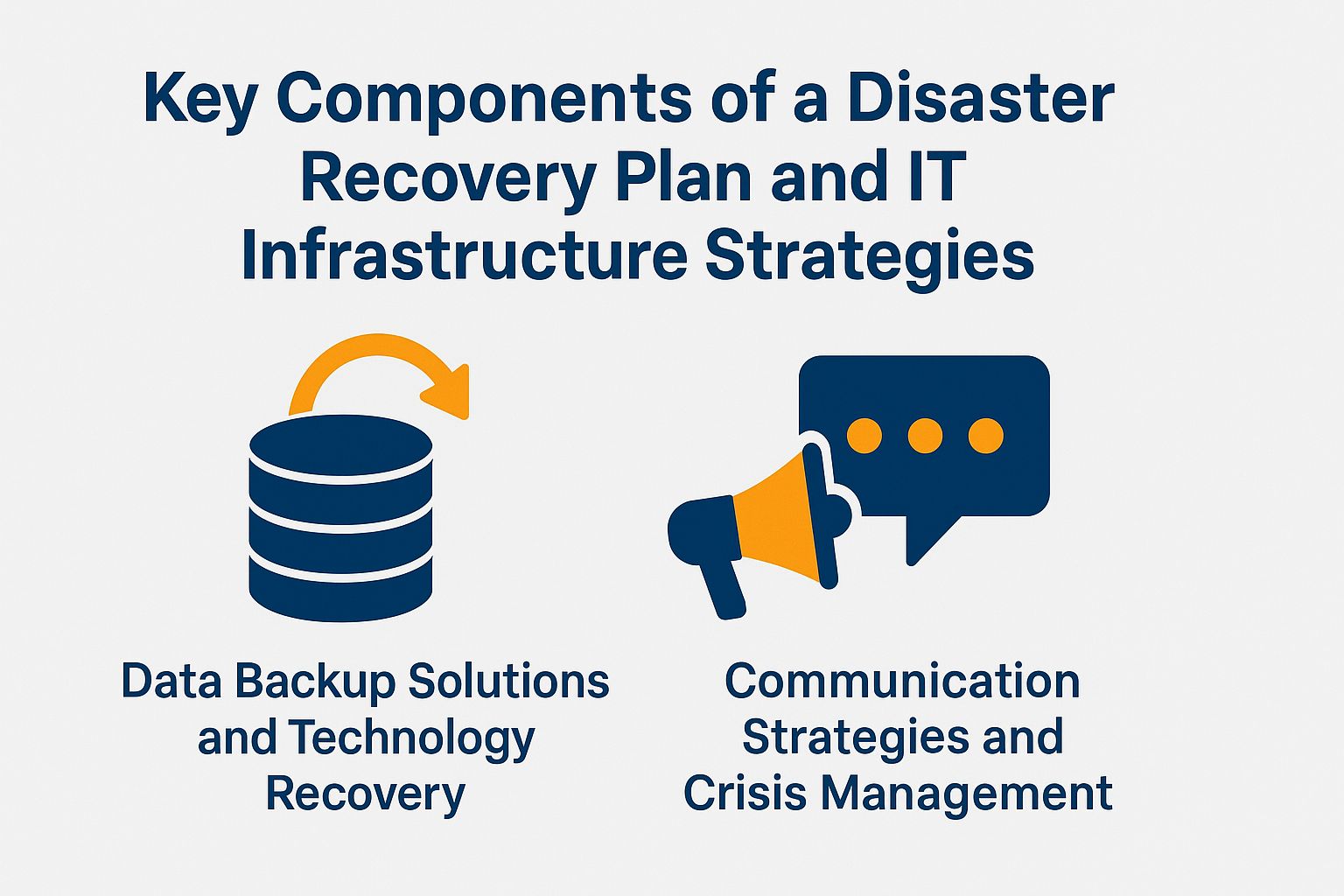Disaster Recovery Planning: A Must for Greenville Businesses

Businesses in Greenville face many unpredictable events. Preparation is crucial. A strong disaster recovery plan helps manage risks and ensures business continuity. This article discusses the importance of disaster recovery planning and business continuity for Greenville. It explores key components and outlines steps to develop and maintain an effective strategy. The time to safeguard business continuity is now.
Importance for Greenville Businesses
Disaster recovery planning is vital for Greenville businesses. It ensures stability and reduces risks, especially from natural disasters like floods and storms. To further minimize potential disruptions, businesses can benefit from understanding how managed IT services help reduce business downtime, providing an additional layer of preparedness and resilience.

Local Risks and Vulnerabilities
Greenville has specific vulnerabilities. Flooding and tornado risks can disrupt businesses. In 2018, tornadoes caused more than $1 million in losses for retailers.
Flooding incidents have also been recorded, affecting more than 500 businesses in vulnerable regions such as Streamside Drive.
To reduce risks, Greenville businesses should: develop a disaster recovery plan, invest in flood insurance, and regularly assess infrastructure.
- Develop a comprehensive disaster recovery plan
- Invest in flood insurance and appropriate insurance coverage
- Conduct regular assessments of infrastructure and business operations to ensure storm preparedness
Additionally, utilizing weather monitoring tools, such as NOAA Weather Alerts and other emergency resources, can assist businesses in staying informed and taking proactive measures to protect their operations.
Key Components of a Disaster Recovery Plan and IT Infrastructure Strategies
A solid disaster recovery plan includes key components. These are data backup solutions, communication strategies, and response frameworks. Each element is vital for resilience. As mentioned in our discussion on how Greenville companies are leveraging cloud computing for growth, embracing cloud solutions can significantly enhance these frameworks by providing scalable and reliable options.

Data Backup Solutions and Technology Recovery
Robust data backup and protection solutions are essential. Options range from local systems to cloud services like Backblaze ($6/month) and Acronis ($49.99/year).
Understanding the differences between cloud and local backups helps in making informed decisions. Local backups provide immediate access and control; however, they are susceptible to physical damage or theft. In contrast, cloud backups, like those offered by Backblaze, deliver off-site security and automatic updates but necessitate an internet connection for data retrieval.
When choosing these solutions, consider Recovery Time Objective (RTO) and Recovery Point Objective (RPO). Shorter RTO means faster recovery. Tighter RPO reduces data loss. These metrics can significantly influence the overall backup strategy.
Communication Strategies and Crisis Management
Effective communication is crucial during a disaster. They keep all stakeholders informed. Tools like Slack and Microsoft Teams enable real-time communication.
A crisis communication plan is critical. Start by identifying key stakeholders: employees, customers, and media. Designate communication leads for updates.
Schedule regular updates, ideally daily or weekly. This keeps everyone aligned.
An example of good crisis communication is how Johnson & Johnson managed the Tylenol crisis in the 1980s. By promptly informing the public and maintaining transparency, the company was able to restore trust in its brand.
Steps to Create an Effective Plan and Business Strategy
To create a disaster recovery plan, follow a clear approach. This includes assessment, strategy development, and implementation. It usually takes 4 to 6 weeks.
- Start with a risk assessment and threat identification in the first week. Identify threats like natural disasters or cyberattacks.
- During weeks two and three, the focus shifts to identifying critical business functions that are essential for operations, including customer support and data management. Comparing these functions with the top IT challenges faced by small businesses in Greenville can provide further insights.
- In weeks four and five, recovery strategies are developed specifically for these functions, prioritizing data backups and alternative communication methods.
- The final week is dedicated to documenting the entire plan and ensuring that team training is conducted, while also establishing a framework for ongoing updates as operational needs evolve.
Testing and Maintenance of the Plan and Plan Testing Activities
Regularly test and update the disaster recovery plan. Conduct simulations at least twice a year. This helps identify gaps and ensures team readiness.
To assess the plan, conduct tabletop exercises and full-scale simulations. Tabletop exercises involve reviewing the plan through discussion, which helps clarify roles, procedures, and stakeholder communication, while full-scale simulations replicate actual disaster scenarios.
Metrics such as recovery time objective (RTO) and recovery point objective (RPO) should be utilized during continuous improvement to evaluate the effectiveness of the plan. Furthermore, the plan should be updated every six months to reflect any changes in business operations or technology, ensuring it remains relevant and effective for real-world applications.
Frequently Asked Questions
What is disaster recovery planning? Why is it important for Greenville businesses?
Disaster recovery planning involves creating strategies to protect and recover critical operations. This is important during natural disasters, cyber attacks, or other emergencies, ensuring business impact analysis and continuity of operations. It is important for Greenville businesses because it ensures business continuity and minimizes downtime in the face of unexpected disruptions.
What are the key components of a disaster recovery plan for Greenville businesses?
Key components of a disaster recovery plan include risk assessment, data backup, crisis communication, and testing. These components work together to ensure that businesses are prepared for various types of disasters.
How does having a disaster recovery plan benefit Greenville businesses?
A disaster recovery plan helps Greenville businesses reduce the impact of disasters on operations. It helps to safeguard critical data, maintain customer trust, and preserve the reputation of the business, while ensuring compliance standards and resource allocation. It also ensures a quicker recovery process and reduces financial losses.
Can Greenville businesses outsource their disaster recovery planning?
Yes, Greenville businesses can outsource their disaster recovery planning and resource management to a professional IT service provider. This allows businesses to have access to expertise and resources that they may not have in-house. It also ensures a comprehensive and well-designed disaster recovery plan that is regularly maintained and updated.
How often should Greenville businesses review and update their disaster recovery plan?
Greenville businesses should review and update their disaster recovery and emergency response plans at least once a year. However, it is also important to review and update the plan after any major changes in the business, such as new technology, new processes, or relocation.
Are there any regulations or standards that Greenville businesses should consider in their disaster recovery planning?
Yes, Greenville businesses should consider regulations and standards. These regulations outline requirements for data protection and security. They help businesses comply and reduce risks during disasters. These include the HIPAA Security Rule, PCI DSS, and ISO 27001 in their disaster recovery planning, to ensure compliance and reduce risks.




